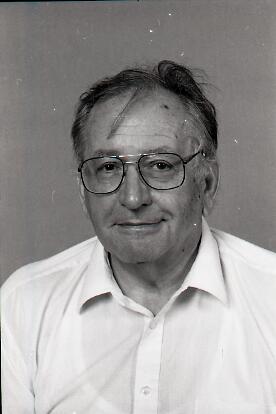
Zona do título e menção de responsabilidade
Título próprio
H. Bruno Schiefer - Portrait
Designação geral do material
- Material gráfico
Título paralelo
Outra informação do título
Título e menções de responsabilidade
Notas ao título
Nível de descrição
Item
Entidade detentora
Código de referência
Zona de edição
Menção de edição
Menção de responsabilidade da edição
Zona de detalhes específicos de materiais
Menção da escala (cartográfica)
Menção da projecção (cartográfica)
Menção das coordenadas (cartográfico)
Menção da escala (arquitectura)
Autoridade emissora e denominação (filatélica)
Zona de datas de criação
Data(s)
-
1995 (Produção)
Zona de descrição física
Descrição física
2 photographs : b&w ; 3.5 x 2.5 cm
2 negatives : b&w ; 3 x 2 cm
Zona dos editores das publicações
Título próprio do recurso continuado
Títulos paralelos das publicações do editor
Outra informação do título das publicações do editor
Menção de responsabilidade relativa ao editor do recurso contínuo
Numeração das publicações do editor
Nota sobre as publicações do editor
Zona da descrição do arquivo
Nome do produtor
História custodial
Âmbito e conteúdo
Head and shoulders image of Dr. Bruno Schiefer, Western College of Veterinary Medicine.
Bio/Historical Note: Bruno Schiefer was born in Cologne, Germany on 25 August 1929. He never spoke much of his adolescence, which was heavily marked by World War II during which he spent considerable time in rural Westerwald, where the Schiefer family originates and his strong affinity to animals developed. After graduating from high school in 1949, he studied Theology at a Catholic seminary in Bonn. In 1952 Schiefer altered his career direction and entered Veterinary Science. He earned both his Doctorate of Veterinary Medicine in 1956 and the equivalent of a Ph.D. in Veterinary Pathology from the University of Munich. In 1966 Schiefer was invited to spend a year as a visiting professor at the University of Connecticut. In 1969 Schiefer joined a team of scientists to investigate the controversial hunting of Canadian harp seals. As a side trip, he visited Saskatoon while being recruited by the University of Saskatchewan. After returning to Munich the family made the bold decision to leave Germany and immigrate to Canada. In July 1969 the newly built Western College of Veterinary Medicine opened with Schiefer as a founding member of the Department of Veterinary Pathology. After just one year he won the prize for best teaching and within two years, Schiefer became acting head of the department. By 1974, he was appointed department head. After a sabbatical in Switzerland, Schiefer served as chairman of the Toxicology Group in the College of Graduate Studies and Research from 1978 to 1983. He lobbied for the establishment of a Toxicology Research Centre, which was finally created in 1983. In 2007, he fully realized his dream of creating a world-class facility as the culmination of a thirty-year struggle. The success of the Toxicology Research Centre and the development of the Canadian Network of Toxicology Centres were Dr. Schiefer’s greatest accomplishments. In the early 1980s, the Canadian Department of External Affairs, asked Schiefer to examine the alleged use of mycotoxins as chemical warfare agents in Southeast Asia. His report from that study became an official UN document in 1982. He served as President of the Society of Toxicology of Canada from 1983 to 1985. After his tenure he was honoured with the Award of Distinction for “exceptional contribution to his profession and the Society.” Schiefer retired in 1993. He died in July 2020 in Warman, Saskatchewan, at age 90.
Zona das notas
Condição física
Fonte imediata de aquisição
Organização
Idioma do material
Script do material
Localização de originais
Disponibilidade de outros formatos
Restrições de acesso
Termos que regulam o uso, reprodução e publicação
Photographer: DAVS
Copyright holder: University of Saskatchewan
Other terms: Researcher responsible for obtaining permission

